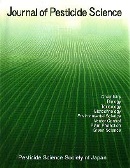Volume 37, Issue 4
Displaying 1-20 of 20 articles from this issue
- |<
- <
- 1
- >
- >|
PART I (IN ENGLISH)
Original Articles
-
Article type: Original Article
2012 Volume 37 Issue 4 Pages 305-311
Published: November 20, 2012
Released on J-STAGE: November 20, 2012
Advance online publication: November 14, 2012Download PDF (396K) -
Article type: Original Article
2012 Volume 37 Issue 4 Pages 312-322
Published: November 20, 2012
Released on J-STAGE: November 20, 2012
Advance online publication: November 14, 2012Download PDF (576K) -
Article type: Original ArticleOriginal Article
2012 Volume 37 Issue 4 Pages 323-332
Published: November 20, 2012
Released on J-STAGE: November 20, 2012
Advance online publication: November 14, 2012Download PDF (656K)
Notes
-
Article type: Note
2012 Volume 37 Issue 4 Pages 333-337
Published: November 20, 2012
Released on J-STAGE: November 20, 2012
Advance online publication: November 01, 2012Download PDF (235K) -
Article type: Note
2012 Volume 37 Issue 4 Pages 338-341
Published: November 20, 2012
Released on J-STAGE: November 20, 2012
Advance online publication: November 02, 2012Download PDF (162K) -
Article type: Note
2012 Volume 37 Issue 4 Pages 342-346
Published: November 20, 2012
Released on J-STAGE: November 20, 2012
Advance online publication: September 27, 2012Download PDF (177K)
PART II (IN JAPANESE)
Abstracts of Articles in Part I
-
Article type: Abstracts of Articles in Part I
2012 Volume 37 Issue 4 Pages 347-348
Published: November 20, 2012
Released on J-STAGE: May 20, 2013
Download PDF (185K) -
2013 Volume 37 Issue 4 Pages D12-999
Published: February 20, 2013
Released on J-STAGE: January 24, 2024
Download PDF (326K) Full view HTML
Review (with Abstract in English)
-
Article type: Review
2012 Volume 37 Issue 4 Pages 349-361
Published: November 20, 2012
Released on J-STAGE: November 22, 2012
Advance online publication: November 01, 2012Download PDF (516K)
Seminar: Experimental Techniques
-
Article type: Seminar: Experimental Techniques
2012 Volume 37 Issue 4 Pages 362-371
Published: November 20, 2012
Released on J-STAGE: May 20, 2013
Download PDF (1054K)
Minireviews: Vision for next-generation pesticides
-
Article type: Minireview
2012 Volume 37 Issue 4 Pages 372-
Published: November 20, 2012
Released on J-STAGE: May 20, 2013
Download PDF (127K) -
Article type: Minireview
2012 Volume 37 Issue 4 Pages 373-376
Published: November 20, 2012
Released on J-STAGE: May 20, 2013
Download PDF (503K) -
Article type: Minireview
2012 Volume 37 Issue 4 Pages 377-380
Published: November 20, 2012
Released on J-STAGE: May 20, 2013
Download PDF (312K) -
Article type: Minireview
2012 Volume 37 Issue 4 Pages 381-385
Published: November 20, 2012
Released on J-STAGE: May 20, 2013
Download PDF (362K) -
Article type: Minireview
2012 Volume 37 Issue 4 Pages 386-390
Published: November 20, 2012
Released on J-STAGE: May 20, 2013
Download PDF (6783K)
Minireviews: Let′s think about more pesticide resistance magnagement
-
Article type: Minireview
2012 Volume 37 Issue 4 Pages 391-
Published: November 20, 2012
Released on J-STAGE: May 20, 2013
Download PDF (114K) -
Article type: Minireview
2012 Volume 37 Issue 4 Pages 392-398
Published: November 20, 2012
Released on J-STAGE: May 20, 2013
Download PDF (544K) -
Article type: Minireview
2012 Volume 37 Issue 4 Pages 399-401
Published: November 20, 2012
Released on J-STAGE: May 20, 2013
Download PDF (233K) -
Article type: Minireview
2012 Volume 37 Issue 4 Pages 402-404
Published: November 20, 2012
Released on J-STAGE: May 20, 2013
Download PDF (217K) -
Article type: Minireview
2012 Volume 37 Issue 4 Pages 405-408
Published: November 20, 2012
Released on J-STAGE: May 20, 2013
Download PDF (255K)
- |<
- <
- 1
- >
- >|
